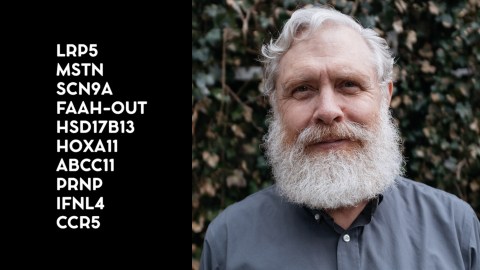Read a Harvard geneticist’s plan for redesigning humans

- Harvard geneticist George Church makes a list of genes that could be modified to enhance human abilities.
- The list tracks both positive and negative effects.
- Redesigning humans can lead to posthumans or transhumans.
Would you improve humanity if you could? Many of us have opinions about how we can boost up society and government. But what about just re-engineering the people themselves, to make them more advanced physically and intellectually? Would better bodies lead to better people? One person who can turn such musings into reality is George Church, the Harvard genetics professor famous for trying to resurrect woolly mammoths, among many other accomplishments. Church also made a list of genes that could be targeted through genetic manipulation for the purpose of designing a new version of humans.
In an interview with Futurism, the professor explained that one purpose of assembling such a list is in giving correct information to the people. It has been his long-term mission to drive down the costs of genetics resources. To that end, the list includes both protective and negative consequences of hacking a particular gene.
“I felt that both ends of the phenotype spectrum should be useful,” Church elaborated. “And the protective end might yield more powerful medicines useful for more people and hence less expensive.”
Here are some selections from the so-called Transhumanist Wishlist, drawing upon the philosophical movement of transhumanism that calls for using technology to enhance human physiology and intellect, leading to a transformation of what it means to be human:
- LRP5 – hacking this gene could give people extra-strong bones, as research has shown a mutation of LRP5 can lead to bones that don’t break. The tweak might make it hard to swim, however, as denser bones also mean lower buoyancy.
- MSTN – messing with the myostatin protein could result in larger, leaner muscles, and cure such diseases as muscular dystrophy.
- FAAH-OUT – the amusingly named FAAH-OUT gene mutation was linked to insensitivity to pain. Wouldn’t you like to have such a super ability?
- ABCC11 – modifying this gene could really pay off socially, as it’s been linked to low odor production. Currently, only 2% of the people in the world carry the mutated version, which helps their armpits not produce any unpleasant smells.
- PCSK9 – people who lack this gene have very low levels of cholesterol. Tweaking it could lead to fighting off coronary disease. On the other hand, the negatives could include a rise in diabetes and even reduced cognition.
- GRIN2B – playing with this gene can lead to enhancing memory and learning abilities.
- BDKRB2 – figuring out how to affect this gene can lead to people who can hold their breath under water for much longer. It figures prominently in the abilities of the indigenous Bajau people (“Sea Nomads”) of Southeast Asia, who are known for amazing feats of deep diving.

George Church, a professor of Genetics at Harvard University, with the MAGE Device Multiplex automated Genome Engineering on November 30, 2012.Photo by Rick Friedman/rickfriedman.com/Corbis via Getty Images
“I’ve made the argument that we’re already transhumanist, that is to say, if it’s defined as being almost unrecognizable to our ancestors,” said Church in a radio interview. “I think if you brought some of our ancestors or even people from un-industrialized tribes they would not understand what we’re doing.”
You can check out the full transhumanist “wish list” here, along with additional resources that include studies of specific genes and their effects. While some of these hacks are already being attempted, more discussion and development is necessary. Church sees that future doctors would be able to receive transplants with hacked genetic modifications.
How long till that future? Scientists around the world are racing to make genetic advancements, generally before their governments catch up. Gene-edited human babies are already being born. Chinese scientists were able to edit the gene CCR5 to make two baby girls more resistant to HIV. On the flip side, they made the girls more susceptible to the West Nile Virus. Finding the right balance will be crucial if we’re to become superhuman.
George Church: A Peek at the Future of Synthetic Biology and Radical Wellnesswww.youtube.com





